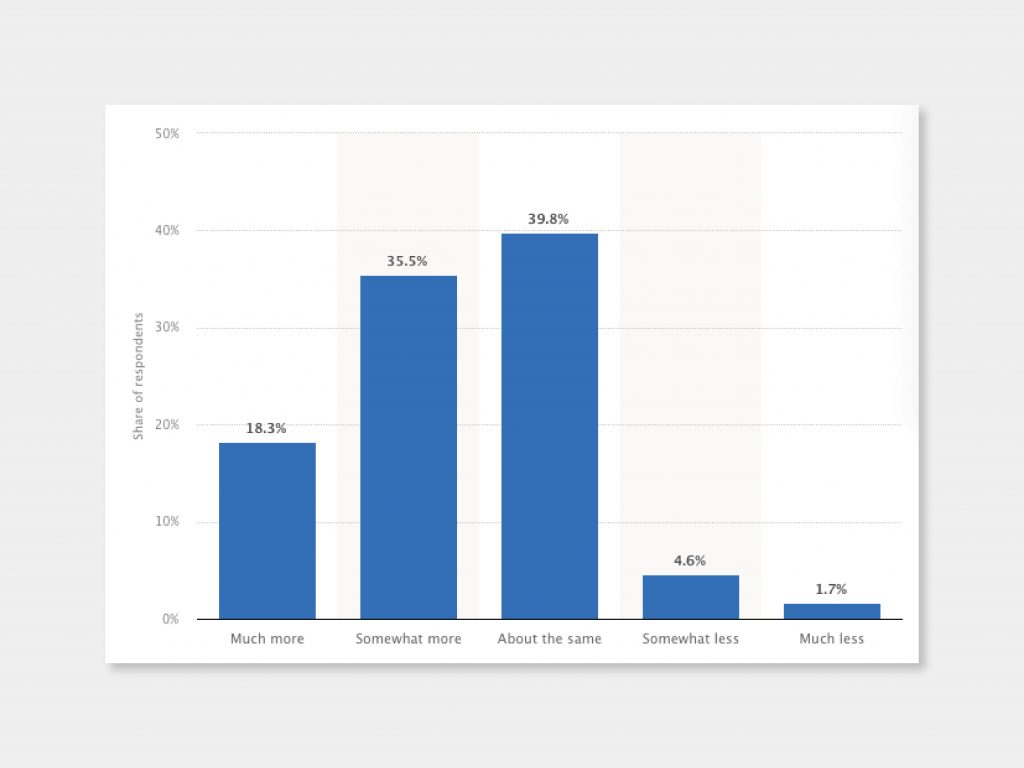Cookie-less future – how will it affect the world of digital advertising?
5th Aug 2022

As you’re probably aware – you’re being exposed to tens maybe even hundreds of targeted adverts a day. One of the key methods to support these advertising ventures are cookies. More precisely third-party cookies. Which own the data collection in today’s world.
What’s problematic with collecting data through cookies? This approach requires users to share their personal data, transparency of what happens with their data is almost non-existent, and there’s an overall lack of online privacy. Due to these and similar reasons, Google has announced to remove third-party cookies altogether by the second half of 2024.
So, in this blog, we’re going to discuss all things cookies and give you our thoughts on how businesses should approach the cookie-less future lingering around the corner. Follow along to learn:
- What’re third-party cookies?
- First-party vs third-party cookies
- What function do third-party cookies serve currently?
- Why is Google moving away from third-party cookies & what’s the alternative?
- What risks the removal of third-party cookies are bringing to advertisers?
- What can you expect from the cookie-less future?
What are third-party cookies?
In its essence, third-party cookies (trackers) are a way to track online behaviour. Categorising users based on interests, websites they visit, demographics, etc.
As hinted in the name, third-party cookies are used by other websites than the one you’re currently visiting. Making it very hard or even impossible to know who possesses your data. They’re usually used to observe user movement between websites/platforms. With the end goal of displaying the most relevant adverts.
First-party vs third-party cookies
First-party cookies’ core function is to optimise UX (user experience) on a website. To ultimately help the website function better. They collect the information you enter on the website and sometimes your IP address.
The key difference between third-party cookies is that data from first-party cookies only go to the website you’re visiting. Instead of third-party servers that collect, store, and sell your data.
What function do third-party cookies serve currently?
On the most basic terms – third-party cookies observe your online behaviour and store it to tailor personalised advertising to you.
Let’s put it into perspective. For instance, you’ve been searching around the web for a new bicycle. You looked through a couple of websites, maybe went and looked at some social media accounts selling bikes. And then suddenly you start seeing bicycle adverts on Instagram.
That’s the essence of how cookies track your online behaviour and then put you in categories that are identified by advertisers as potential buyers.
Why is Google moving away from third-party cookies & what’s the alternative?
Google is following the example of other browsers like Mozilla Firefox, Brave, and Apple’s Safari, which have already blocked third-party cookies as a default option. Whilst Google Chrome is still lacking behind and is considered one of the least private browser options out there.
The reason it’s taking Google a while to implement these changes – is that they heavily rely on the data Chrome brings. But with ever-growing privacy concerns amongst the public – Google’s hand is being forced and they’re risking losing the #1 most popular browser spot.

So, the death of cookies is being slowly rolled out. Their goal is to improve user privacy online and help protect confidential data from getting into the wrong hands. Moreover, we know that Google began Privacy Sandbox trials.
This initiative is focused on creating web-wide tracking standards without compromising privacy. In other words, it’s Google’s solution to online advertising without the need for third-party cookies. They’ll be working on technological innovations to provide a better online experience for users and businesses alike.
What risks the removal of third-party cookies are bringing to advertisers?
Due to Google’s announcement, advertisers are justifiably worried. The option to track and advertise based on third-party cookies will cease to exist. The same extends to Chrome users.
The biggest risk the advertising industry faces is a drop in performance. Without third-party cookies, there is a risk that advertising will become less efficient. And by extension cost more money to get the same results as before.
This will force advertisers to find new & privacy-conscious ways of reaching their target audience. Although, there are some possible alternatives in making:
- Utilising Chrome’s first-party cookies, marketers will still be able to send targeted adverts.
- We’ll see alternative approaches to targeted advertising brought by Google’s Privacy Sandbox once the platform matures.
- The involvement of database management tools will see advertisers rely more on their own first-party data.
What can you expect from the cookie-less future?
End-user consent is here to stay. What does that mean? To collect any user data, you’re required for them to consent to it. It’s a surprisingly simple solution, but it solves one of the biggest issues of not knowing who has access to users’ personal data.
And with third-party cookies ceasing to exist – businesses will need to find a new approach. One of the more popular ideas going around is to go all in on first-party data. Get better at collecting it, store it in an ethical way, and use it to enhance your users’ experience, rather than sell it to big data.
Or alternatively, we will witness more advertising platforms appear, that are built off massive first-party databases. For example, Tesco holds data of over 20 million households in the UK and Boots have access to more than 17 million Advantage Card holders’ data. We can expect similar behaviour from other businesses that possess loyalty programs. To eventually launch their own advertising services.
Moreover, we’ll likely see data capture roles/departments skyrocket in popularity and budgets. With the goal of maintaining personalised user experiences and the ability to make informed high-level business & marketing decisions. Without access to third-party data, businesses will be forced to find a new way to collect information about their customers.
On the other hand, collecting first-party data isn’t all bad for businesses. Even if it proves to be a challenge in the beginning – it will stop businesses from relying on third-party data too much. And eventually, gain more control over their users’ information. Which will likely result in even better-personalised content, communications, products, services, etc. and ultimately more satisfied users.



